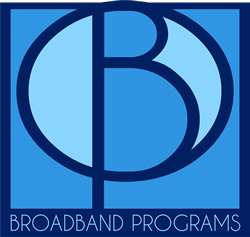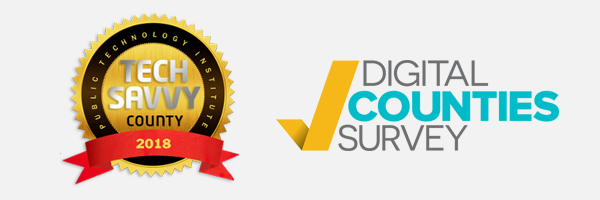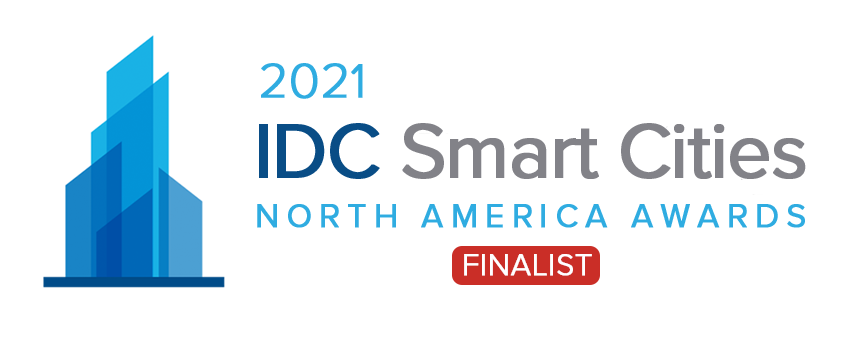What Is the Emergency Broadband Benefit (EBB)?
EBB offers a temporary discount of up to $50 per month for low-income families and people who have lost a job, been furloughed, or applied for or received unemployment during the Covid pandemic. The $50 benefit can cover the entire monthly cost of home broadband. If a broadband plan costs less than $50 per month, EBB will pay up to the actual cost of a broadband plan.
EBB is a temporary program. It will last until federal funding runs out or until 6 months after the U.S. Department of Health and Human Services declares the pandemic is over. When the funding will run out is unknown because it depends on how many people enroll.
There are no long-term contracts required to get the EBB benefit and you can change plans at any time. You can be a current subscriber to any broadband plan and get the discount from any eligible provider if you qualify. Broadband providers must get your consent to continue providing service after EBB ends so families will not be charged for broadband service if the EBB ends. In addition, the State of Maryland, has approved additional funding to continue at least a $15 a month discount for one additional year after EBB ends.
EBB also includes a one-time $100 discount off a computer, tablet, or smartphone, and requires a payment of more than $10 and less than $50 by subscribers to receive the computer discount. However, only 10% of eligible carriers are offering devices and these providers are mostly wireless carriers or hotspot providers. The Office of Broadband Programs is exploring other options to get laptops at discounted prices for low-income families. EBB was funded by the Consolidated Appropriations Act of 2021 and created by the Federal Communications Commission (FCC). EBB will be administered by the Universal Service Administrative Company (USAC). USAC also administers the Lifeline Program, which providers a $9.25 discount on phone or broadband service.
What Broadband Providers are Participating in EBB?
| Company | Broadband Service Type | Offering Device? (Laptop, Desktop, or Tablet) | Type of Device offered | Refurbished | Note |
|---|---|---|---|---|---|
| Access Wireless | Mobile Broadband | No | Smartphones | Yes | Low-Bandwidth Broadband |
| American Assistance and You Call Wireless | Mobile Broadband | YES | TBD | TBD | Low-Bandwidth Broadband |
| Comcast | Fixed Broadband | No | Robust Broadband | ||
| good2go mobile | Mobile Broadband | No | No | No | Low-Bandwidth Broadband |
| human-I-T | Mobile Broadband | YES | Chromebooks | Yes | Low-Bandwidth Broadband |
| RCN Starpower (coming soon) | Fixed Broadband | No | Robust Broadband | ||
| Sano Health | Mobile Broadband | No | Smartphone | No | Low-Bandwidth Broadband |
| StandUp Wireless | Mobile Broadband | YES | Tablets | No | Low-Bandwidth Broadband |
| T-Mobile | Fixed Broadband or Mobile Broadband | YES | N/A | N/A | Maybe hotspots unless a phone is purchased |
| Verizon fios | Fixed Broadband | No | Robust Broadband |
The following providers are offering service in Montgomery County. This list may be periodically updated. You can also use the FCC Companies Near Me tool to find providers by entering your zip code.
Am I Eligible for EBB?
Low-income households are eligible. A “household” is a group of people who live together and share money (even if they are not related to each other). Each household is eligible for a separate EBB. For example, an adult living with someone else who supports him would together be a household, as is a parent and child living together, or a couple living together. In contrast, four roommates living together but not sharing money would be four separate households. In addition, any eligible member of a household makes the entire household eligible. For example, a child or senior enrolled in program that is part of EBB makes the entire household eligible for EBB. Also, when a child shares time living in two households, such as when divorced parents share custody but live at different houses, both households may qualify for EBB.
Households are eligible for EBB if they meet one of the following conditions:
- They are enrolled in one of the following programs:
- SNAP (Supplemental Nutrition Assistance Program)
- National School Lunch Program (often called Free and Reduced Meals in Montgomery County Public Schools)
- Medicaid
- Federal Public Housing Assistance (OBP is working to get more information – only federal public housing assistance, not state housing assistance qualifies for EBB. Non-federal, local housing program participants likely will not qualify for EBB on this basis, but could qualify under other programs.)
- Pell Grants
- Supplemental Security Income (SSI)
- Veterans Administration Pension or Survivors Benefits
- Tribal Assistance (Tribally-Administered Temporary Assistance for Needed Families (TA-TANF, Bureau of Indian Affairs (BIA) General Assistance (GA), Tribal Head Start, Food Distribution Program on Indian Reservations (FDPIR))
- Lifeline Program
- A low-cost internet program (such as from Internet Essentials from Comcast, Internet First from RCN, or Lifeline through Verizon, T-Mobile or other carrier)
- Their income is less than 135% of the federal poverty guidelines
- $17,226 for a household of 1
- $23,274 for a household of 2
- $29,322 for a household of 3
- Or $6,048 more for each additional household member
- They have lost a job, been furloughed, or applied for or received unemployment benefits any time after February 2020 and their 2020 income was $99,000 or less as a single tax filer, or $198,000 or less as a married couple. If you applied for unemployment but did not receive an award, you may still qualify under this provision.
How Do I Apply for EBB
You may apply online, by telephone, or by mail. It will be easier and faster if you can get access to apply online, but you must have an email address to apply online. Montgomery County will be organizing events to provide access to computers to enable enrollment online, and residents may make appointments to use computers in libraries to apply.
If a household is already enrolled in a low-cost Internet program (such as Comcast Internet Essentials, RCN Internet First, or Lifeline with Verizon or a telephone company), they should contact their provider and request the EBB benefit.
For all other households there is a three-step process:
- Go to the National Verifier website https://www.getemergencybroadband.org/ and follow the instructions. Most applicants should be prepared to upload a document showing current enrollment (such as an award, enrollment, or certification letter showing eligibility for housing and lunch programs, or enrollment in SNAP or other programs). If applying between the hours of 9 am and 9 pm ET, an Application ID Number will be generated within 2-3 minutes. If documents need to be review, the system will generate an Application ID and not wait until review is complete to issue this number.
- Contact a broadband provider, select a plan, make an installation appointment, and receive an Account Number. Comcast, RCN, Verizon fios, and T-Mobile are participating. Other providers offering lower speed wireless broadband (with some also offering EBB program smartphones, tablets, or Chromebooks for an additional payment of more than $10 and less than $50) include You Call Wireless, StandUp Wireless, human-I-T, Access Wireless, Sano Health, and good2go mobile.
- Use the broadband provider’s customer service telephone representative or website to opt in and request the EBB credit using the new Account Number and Application ID Number. This can usually be done at the end of signing up for broadband service, but it need to be completed to get the EBB credit.
How to Use the National Verifier and What Additional Documents are Required
Go to https://GetEmergencyBroadband.Org and click on Apply Now.
- Enter name
- Enter date of birth
- Enter last four digits of Social Security Number (SSN). Note, you do not need a SNN to apply. You may use a passport driver’s license, military or state ID, or taxpayer ID number instead of an SSN. Enter “0000” for as the last four digits of the Social Security Number (SSN) to use an alternate ID. You will need to upload a copy of the alternate ID.
- Enter home address. If you are homeless, you may enter the address of a support organization as your address.
- If you qualify through a dependent child, enter your child’s information.
- You will be asked to set up an account by choosing a user name and password. You must enter an email address.
- Check the box that you are not a robot.
- Click Submit.
- Go to Emergency Broadband Benefit Program and click “get started”
- Select the program you are enrolled in or condition that makes you eligible for EBB. (You may select more than one.)
- Review your name, date of birth, SSN number, and address. Make corrections if necessary.
- Confirm your address and location on map.
- Confirm your household information.
- Type your initials into boxes to acknowledge you agree with the EBB eligibility conditions (3 questions).
- THE NEXT SCREENS ARE WHERE YOU WILL ENTER DOCUMENTS TO DEMONSTRATE ELIGIBILITY. Don’t be alarmed to read “We Didn’t Recognize Your Information” or “We Could Not Confirm That You Qualify for the Emergency Broadband Benefit”.
The National Verifier is designed to look information from other databases to confirm that you are enrolled in a program. But at this time, the system can only look up participants in the Lifeline, Medicaid, and VA programs.
IF YOU ARE QUALIFYING FOR EBB BY BEING ENROLLED IN ANY OTHER PROGRAM, ARE QUALIFYING BASED ON INCOME, OR HAVE AN ALTERNATE FORM OF ID, YOU WILL REACH THESE PAGES AND WILL NEED TO UPLOAD ADDITIONAL DOCUMENTATION. (Don’t worry! Don’t give up! Everything will be alright)
BE PREPARED – HAVE YOUR DOCUMENTS READY. Below is short chart of what documents are needed or use this list. Use links below to get more specific information.
For program eligibility, what you need is an eligibility or certification letter with your name, the program name, the government or educational entity issuing the letter, something stating you are eligible for a program, and it should have an issue date within the last 12 months (with exceptions for SNAP and Pell Grants).
For income verification, you need a 2020 tax return, income statement from employer, paycheck stub, unemployment benefit statement, divorce or child support award containing income information. If you are qualifying because of a job loss, you must demonstrate evidence of the job loss and that your income was less than $99,000 in 2020 ($198,000 for married couples). If are qualify on the basis of low-income alone, you must demonstrate your income is less than 135% of the federal poverty guidelines.
Program That Makes Household Eligible for EBB What Additional Documentation Must Be Uploaded SNAP Eligibility letter issued in last 12 months NSLP (school lunch) Eligibility letter from school for 2019-20 or 2020-21 school year. (If your child qualify for free school lunch because the majority of students qualify for free lunch and thus all students qualify for free lunch – the system may be able to look up these schools without additional documentation.) Medicaid Additional documents should not be required Federal Public Housing Assistance You can only use federal not state (or presumably local) housing assistance. Award letter stating award amount or public housing assistance lease agreement that has type of Public Housing Assistance credit used. Pell Grants Award letter for the current school year, but you can also use screen shots of National Student Loan Data System or FAFSA dashboard, or a copy of the email sent by the Department of Education about the EBB Program Veterans Administration Pension Additional documents should not be required Veterans Administration Survivors Benefit Additional documents should not be required SSI Eligibility letter issued in last 12 months Tribal assistance (TA-TANF, BIA GA, Tribal Head Start, FDPIR) Eligibility letter issued in last 12 months Income 135% of the federal poverty guidelines: Less than $17,226/year for household of 1; less than $23,274 for 2; less than $29,322 for 3; greater than $35,370 for 4; add $6,048 for each additional household member Tax return, income statement from employer, paycheck stub, unemployment benefit statement, divorce or child support award containing income information Job loss, furlough/layoff, or applied for or received unemployment benefits any time after February 2020 AND 2020 income was $99,000 or less as a single tax filer, or $198,000 or less as a married couple Layoff/furlough notice or unemployment application, approval letter, or benefit statement; AND income document (2020 tax return; benefit statement from Social Security, VA, retirement or pension, or unemployment or Worker’s Compensation; divorce or child support award containing income information - Documents to Prove Identity
- Documents to Resolve Address Issues
- Documents to Prove Income
- Documents to Prove Participation in SNAP, Medicaid, SSI, Pell Grant, School Lunch, and Tribal Programs
- The County is working to get more information about documents needed to demonstrate participation in Federal Public Housing Assistance
- Initial (again!, yes again!) that you understand the EBB program rules and have been truthful. Then click SUBMIT!
- If you apply between the hours of 9 am and 9 pm ET (7 days a week), wait 2 to 3 minutes, and then a screen will appear providing you with an APPLICATION ID Number. SAVE THIS NUMBER! You will need it when you sign up for broadband.
- If you need assistance:
- Emergency Broadband Support Center | (833) 511-0311 | [email protected]
Available 7 days a week between 9 am and 9 pm ET - Use this Form to get help from the Office of Broadband Programs, Community Technology division
- Emergency Broadband Support Center | (833) 511-0311 | [email protected]
Lifeline and EBB
Lifeline is program that offers eligible participants a $9.25 discount on telephone or broadband service. You may participate in both Lifeline and EBB. To apply for Lifeline, go to the National Verifier. Sign into your National Verifier account. On the Welcome Screen, select “Start Lifeline Application.” You will be able to qualify for Lifeline and EBB if you qualify through participation in the following programs and income levels:
- SNAP
- Medicaid
- Federal Public Housing Assistance
- Veterans Administration Pension
- Veterans Administration Survivors Benefit
- Tribal assistance (TA-TANF, BIA GA, Tribal Head Start, FDPIR)
What Broadband Programs Are Less Than $50 per Month?
Programs Available to All HouseholdsINFO COMING SOONLow-Cost Month Broadband Plans for Low-income Families
Comcast Xfinity, RCN Starpower, and Verizon fios all offer a low-cost home broadband program for low-income families. Additional information is available here:
- Comcast’s Internet Essentials is $9.95 per month for 50 Mbps down by 20 Mbps up (first two months free)
- RCN’s Internet First is $9.95 per month for 25 Mbps down by 3 Mbps up (first two month free)
- Verizon offers a Lifeline discount to reduce the price of its 200 Mbps down by 200 Mbps up plan to $34.99 per month ($19.99 for first three months)
- Compare complete plan details here.
Comparison of Eligibility Criteria for Low-Cost Plans and Eligibility for EBB
| Low-income Families Eligible If Enrolled in the Following Programs: | VERIZON Federal Lifeline | COMCAST Internet Essentials | RCN Internet First | Emergency Broadband Benefit |
|---|---|---|---|---|
| Veterans Administration Pension | Yes | Yes | Yes | Yes |
| Tribal assistance (including TTANF FDPIR) | Yes | Yes | Yes | Yes |
| Pell Grants (student education) | Yes | Yes | Yes | |
| Veterans Administration Survivors Benefit | Yes | Yes | ||
| WIC (food assistance) | Yes | Yes | Yes | |
| TANF (temporary assistance) | Yes | Yes | Yes | |
| Headstart | Yes | Yes | ||
| SSI (Supplemental Security Income) | Yes | Yes | ||
| LIHEAP (energy assistance) | Yes | Yes |



